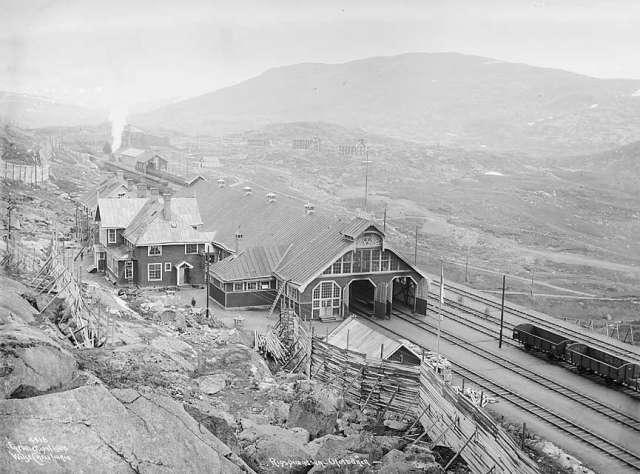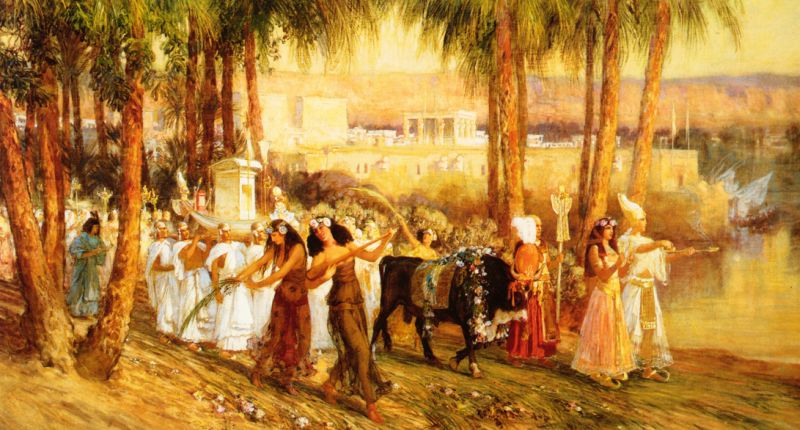|
Narvik Winter Festival
Narvik Winter Festival, in Norwegian just (The Winter Festival Week), is an annual cultural festival with railway history platform in Narvik. It is based on stories, myths and facts from the construction time of the Narvik and Kiruna railway system around 1900. Important symbols for the Narvik Winter Festival are the rallars, railway worker rallaren, Svarta Bjorn (Black Bear) and the Ofotbanen The Ofoten Line ( no, Ofotbanen) is a railway line in Narvik, Norway. It runs from the Port of Narvik to Riksgränsen on the Norway–Sweden border, where the line continues as the Ore Line via Kiruna and Gällivare to Luleå. The Ofoten Line .... The Narvik Winter Festival is organized annually in March, the first time in 1956 as a «French festival». In 1957 the event was called ''Festival Narvik''. Today the festival, with around 200 events, attract a total of about 30,000 visitors. The Narvik Winter Festival has a special position in the local population, as a large part o ... [...More Info...] [...Related Items...] OR: [Wikipedia] [Google] [Baidu] |
Narvik
( se, Áhkanjárga) is the third-largest municipality in Nordland county, Norway, by population. The administrative centre of the municipality is the town of Narvik. Some of the notable villages in the municipality include Ankenesstranda, Ballangen, Beisfjord, Bjerkvik, Bjørnfjell, Elvegård, Kjøpsvik, Skjomen, Håkvik, Hergot, Straumsnes, and Vidrek. The Elvegårdsmoen army camp is located near Bjerkvik. Narvik is located on the shores of the Ofotfjorden. The municipality is part of the traditional district of Ofoten of Northern Norway, inside the Arctic Circle. The municipality of Narvik borders the municipality of Hamarøy to the southwest, Evenes to the northwest, Bardu, Gratangen, Lavangen and Tjeldsund (in Troms og Finnmark county) to the north, and Norrbotten County ( Lapland) in Sweden to the south and east. The municipality is the 10th largest by area out of the 356 municipalities in Norway. Narvik is the 57th most populous municipality in Norway with a popula ... [...More Info...] [...Related Items...] OR: [Wikipedia] [Google] [Baidu] |
Kiruna
(; se, Giron ; fi, Kiiruna ) is the northernmost Stad (Sweden), city in Sweden, situated in the province of Lapland, Sweden, Lapland. It had 17,002 inhabitants in 2016 and is the seat of Kiruna Municipality (population: 23,167 in 2016) in Norrbotten County. The city was originally built in the 1890s to serve the Kiruna Mine. The Esrange Space Center was established in Kiruna in the 1960s. Also in Kiruna are the Institute of Space Physics (Sweden), Institute of Space Physics and Luleå University of Technology's Department of Space Science. History Origins Archaeological findings have shown that the region around Kiruna has been inhabited for at least 6,000 years. Centuries before Kiruna was founded in 1900, the presence of iron ore at Kiirunavaara and Luossavaara had been known by the local Sami people, Sami population. In 1696, Samuel Mört, a bookkeeper of the Kengis works, wrote on rumours about the presence of iron in the two hills.Kummu 1997, p. 96. The ore became b ... [...More Info...] [...Related Items...] OR: [Wikipedia] [Google] [Baidu] |
Navvy
Navvy, a clipping of navigator ( UK) or navigational engineer ( US), is particularly applied to describe the manual labourers working on major civil engineering projects and occasionally (in North America) to refer to mechanical shovels and earth moving machinery. The term was coined in the late 18th century in Great Britain when numerous canals were being built, which were also sometimes known as "navigations", or "eternal navigations", intended to last forever. Nationalities A study of 19th-century British railway contracts by David Brooke, coinciding with census returns, conclusively demonstrates that the great majority of navvies in Britain were English. He also states that "only the ubiquitous Irish can be regarded as a truly international force in railway construction,"Brooke (1983). Page 167. but the Irish were only about 30% of the navvies. By 1818, high wages in North America attracted many Irish workers to become a major part of the workforce on the construction of the ... [...More Info...] [...Related Items...] OR: [Wikipedia] [Google] [Baidu] |
Svarta Bjorn
Anna Rebecka Hofstad (7 April 1878 in Offersøy, Norway – 12 October 1901 in Tornehamn, Sweden), known in history as Svarta Bjorn (Black Bear); Norwegian: Svarta Bjørn, Swedish:Svarta Björn, was a Norwegian cook, active as a cantine cook for the railway Navvy workers during the construction of the Iron Ore Line between Kiruna and Narvik in 1899-1901. She has been treated as a local legend in the history of the area and became the object of fiction. She has been described as tall, dark, beautiful and intelligent. A reason for her fame may be the fact that during this period of settlement in the area, she was one of few women there, and was therefore idealized as an icon among the railway workers. According to the legend, she died during a fight with another railway cook, who broke her ribs and gave her a fatal blow to the head. She was taken to the infirmary in Tornehamn, where she died. At the time of her death, she was also to have suffered from tuberculosis, which may al ... [...More Info...] [...Related Items...] OR: [Wikipedia] [Google] [Baidu] |
Ofoten Line
The Ofoten Line ( no, Ofotbanen) is a rail transport, railway line in Narvik, Norway. It runs from the Port of Narvik to Riksgränsen on the Norway–Sweden border, where the line continues as the Malmbanan, Ore Line via Kiruna and Gällivare to Luleå. The Ofoten Line is single track (rail), single track, electrified at and has seven stations. The line only connects to the rest of the rail transport in Norway, Norwegian railway network via Sweden. The main traffic is up to 12 daily freight trains operated by Malmtrafik that haul iron ore from Sweden to Narvik. In addition, CargoNet operates container trains, branded as the Arctic Rail Express (ARE), and SJ AB, SJ operates passenger trains, including a night train to Stockholm. Construction of the Ofoten Line started in 1898 along with the Ore Line from Riksgränsen to Kiruna. They were completed in 1902, allowing LKAB to haul ore from their mines in Kiruna to the ice-free Port of Narvik. Operation and ownership of the line was ... [...More Info...] [...Related Items...] OR: [Wikipedia] [Google] [Baidu] |
1956 Establishments In Norway
Events January * January 1 – The Anglo-Egyptian Condominium ends in Sudan. * January 8 – Operation Auca: Five U.S. evangelical Christian missionaries, Nate Saint, Roger Youderian, Ed McCully, Jim Elliot and Pete Fleming, are killed for trespassing by the Huaorani people of Ecuador, shortly after making contact with them. * January 16 – Egyptian leader Gamal Abdel Nasser vows to reconquer Palestine. * January 25– 26 – Finnish troops reoccupy Porkkala, after Soviet troops vacate its military base. Civilians can return February 4. * January 26 – The 1956 Winter Olympics open in Cortina d'Ampezzo, Italy. February * February 11 – British spies Guy Burgess and Donald Maclean resurface in the Soviet Union, after being missing for 5 years. * February 14– 25 – The 20th Congress of the Communist Party of the Soviet Union is held in Moscow. * February 16 – The 1956 World Figure Skating Championships open in Garmisch, West Germany. * February 2 ... [...More Info...] [...Related Items...] OR: [Wikipedia] [Google] [Baidu] |
Festivals In Norway
A festival is an event ordinarily celebrated by a community and centering on some characteristic aspect or aspects of that community and its religion or cultures. It is often marked as a local or national holiday, mela, or eid. A festival constitutes typical cases of glocalization, as well as the high culture-low culture interrelationship. Next to religion and folklore, a significant origin is agricultural. Food is such a vital resource that many festivals are associated with harvest time. Religious commemoration and thanksgiving for good harvests are blended in events that take place in autumn, such as Halloween in the northern hemisphere and Easter in the southern. Festivals often serve to fulfill specific communal purposes, especially in regard to commemoration or thanking to the gods, goddesses or saints: they are called patronal festivals. They may also provide entertainment, which was particularly important to local communities before the advent of mass-produced entert ... [...More Info...] [...Related Items...] OR: [Wikipedia] [Google] [Baidu] |
Festivals Established In 1956
A festival is an event ordinarily celebrated by a community and centering on some characteristic aspect or aspects of that community and its religion or cultures. It is often marked as a local or national holiday, mela, or eid. A festival constitutes typical cases of glocalization, as well as the high culture-low culture interrelationship. Next to religion and folklore, a significant origin is agricultural. Food is such a vital resource that many festivals are associated with harvest time. Religious commemoration and thanksgiving for good harvests are blended in events that take place in autumn, such as Halloween in the northern hemisphere and Easter in the southern. Festivals often serve to fulfill specific communal purposes, especially in regard to commemoration or thanking to the gods, goddesses or saints: they are called patronal festivals. They may also provide entertainment, which was particularly important to local communities before the advent of mass-produced ... [...More Info...] [...Related Items...] OR: [Wikipedia] [Google] [Baidu] |







